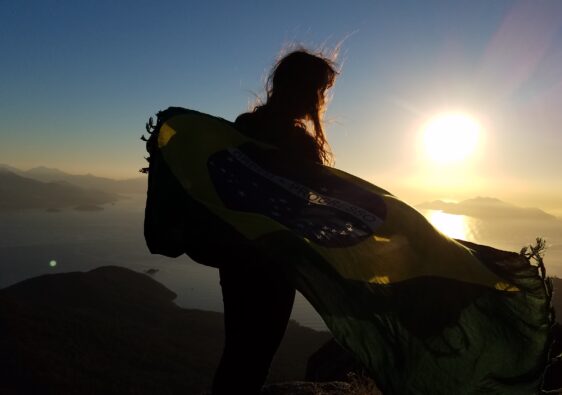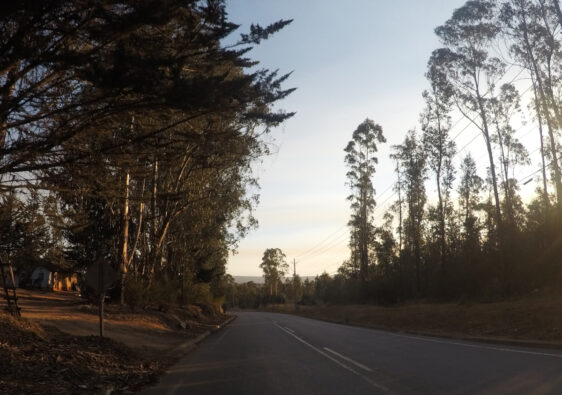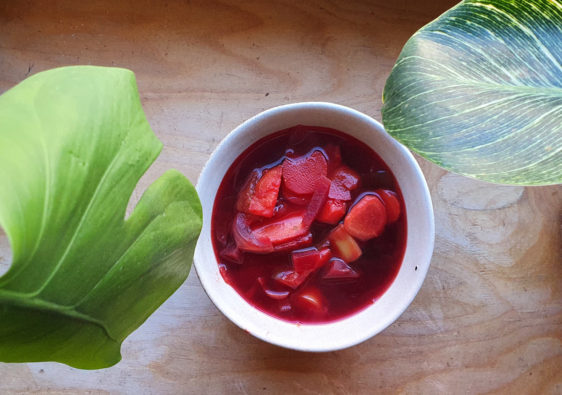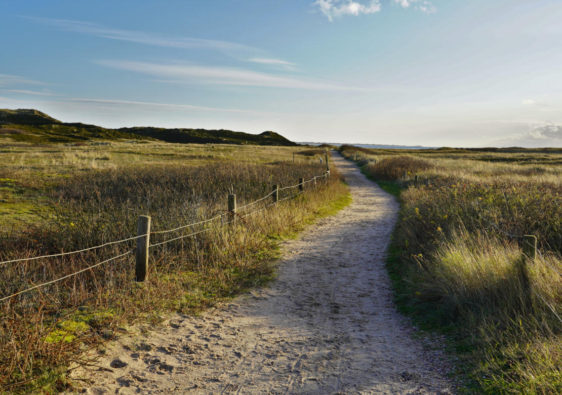Nestled deep within the heart of Patagonia lies a natural masterpiece that seems to have been painted by the hands of gods themselves – Torres del Paine National Park. With its rugged peaks, crystal-clear lakes, and windswept landscapes, this enchanting haven beckons adventurers from around the world to embark on a journey that promises to ignite their senses and test their limits. Welcome to a realm where nature’s raw grandeur takes center stage, and the thrill of hiking unveils the secrets of a land untouched by time.
This hiker’s guide will take you through one of the more immersive experiences, by taking you on a multi-day trek through the park. The “W Circuit” is what will be covered here, but the “O Circuit” is another popular route that many hiker’s choose to take. The “W” is the lighter of the two, but both will take you through some of the park’s most iconic landscapes.
In This Comprehensive Hiking Guide
I invite you to lace up your boots, strap on your backpack, and join me as we navigate the labyrinthine trails of Torres del Paine. Whether you’re a seasoned hiker seeking a new challenge or a nature enthusiast eager to immerse yourself in breathtaking vistas, this guide is your key to unlocking the wonders that await within this UNESCO World Biosphere Reserve.
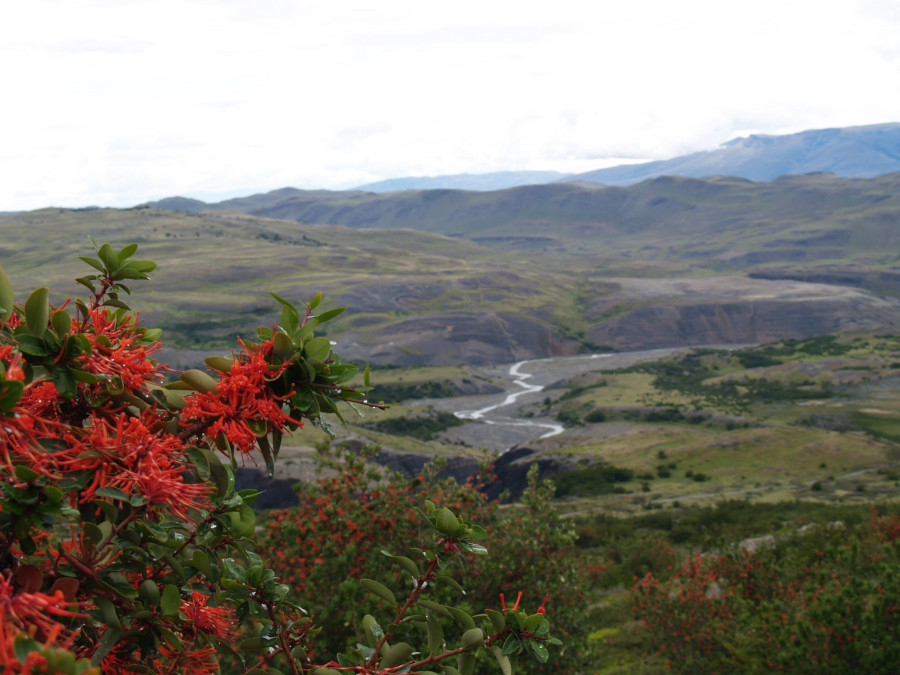
Over the course of this journey, I will unveil the park’s diverse ecosystems, share invaluable tips for navigating its ever-changing terrain, and provide insights into the awe-inspiring flora and fauna that call this wilderness home. From the iconic granite spires of Los Cuernos to the imposing beauty of Glacier Grey, every step you take will be a testament to your courage and a tribute to the untamed beauty that is Torres del Paine.
As we traverse through ancient forests, wind-sculpted valleys, and alpine meadows, remember that this guide is more than just a collection of maps and directions – it’s a celebration of the profound connection between humans and nature. So, embark on this adventure with an open heart, a curious spirit, and a willingness to be humbled by the majestic landscapes that surround you.
Get ready to explore, to conquer, and to be forever changed by the magic of Torres del Paine. Your journey starts here.
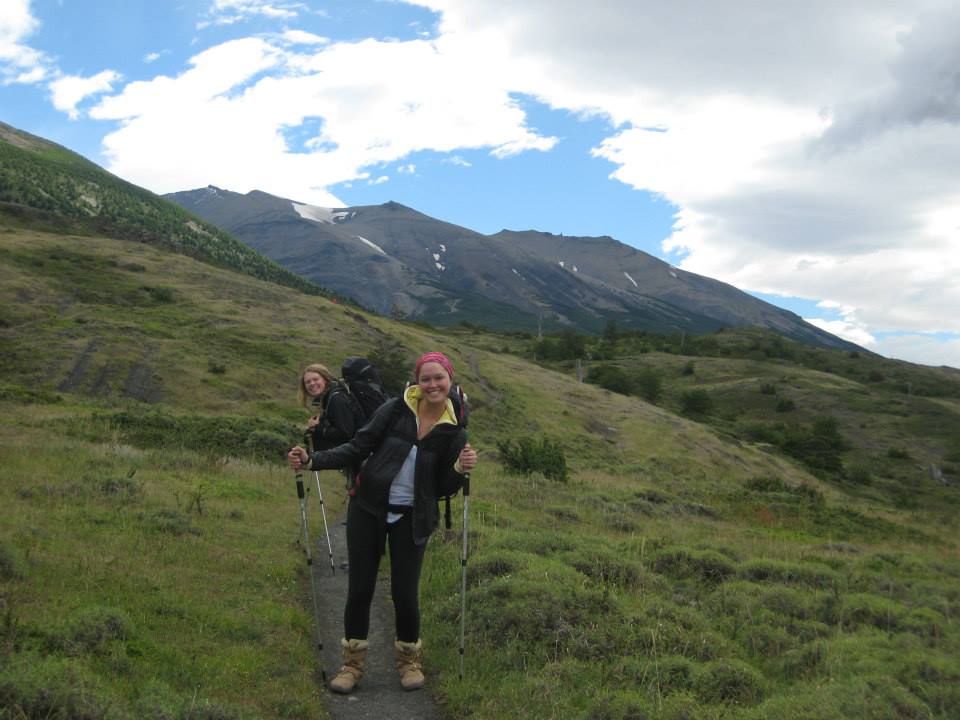
Getting There:
Getting to Torres del Paine from Santiago involves a combination of transportation modes, as the park is located in a remote part of Patagonia. Here’s a general guide on how to reach Torres del Paine from Santiago:
- Flights to Punta Arenas or Puerto Natales: Start by flying from Santiago to either Punta Arenas or Puerto Natales. Punta Arenas is the larger city, while Puerto Natales is closer to Torres del Paine. Both cities have airports that receive domestic flights from Santiago. Flights can take around 3-4 hours.
- Bus or Transfer to Puerto Natales: From Punta Arenas, you can take a bus or arrange for a private transfer to Puerto Natales. The bus journey takes around 3 hours, while a transfer might be quicker and more convenient.
- Base in Puerto Natales: Many travelers use Puerto Natales as a base for their Torres del Paine adventure. It’s a charming town with accommodation options, restaurants, and outdoor stores for last-minute gear needs.
- Bus to Torres del Paine: From Puerto Natales, you can take a bus to Torres del Paine National Park. The journey takes around 2.5 to 3 hours, depending on the stops and route. Buses are equipped for tourists and typically offer scenic views along the way.
- Lodging Options: Inside the park, there are various lodging options ranging from basic campsites to luxury lodges. It’s recommended to book your accommodations well in advance, especially during peak seasons.
Remember that travel conditions, flight availability, and schedules might vary, so it’s advisable to check the most up-to-date information and plan your trip accordingly. Additionally, weather conditions can be unpredictable, so be prepared for changes and delays in your travel plans.
Packing for The “W,” Torres del Paine:
Packing for a hike in Torres del Paine requires careful consideration due to the diverse and ever-changing weather conditions in Patagonia. Here’s a comprehensive packing list to ensure you’re well-prepared for your hiking adventure:
Clothing:
- Moisture-Wicking Base Layers: Pack lightweight, moisture-wicking shirts and pants to keep your skin dry and comfortable.
- Insulating Layers: Fleece jackets or down vests provide warmth without adding much weight to your pack.
- Waterproof and Windproof Jacket: A durable waterproof and windproof jacket is essential to shield you from Patagonia’s unpredictable weather.
- Convertible Hiking Pants: Opt for pants that can convert into shorts, providing versatility as the temperature changes.
- Quick-Drying Underwear and Socks: Pack multiple pairs of moisture-wicking underwear and hiking socks to keep your feet dry and comfortable.
- Gloves and Hat: Bring lightweight gloves and a warm hat to protect your extremities from cold weather.
- Hiking Boots: Sturdy waterproof hiking boots with ankle support are crucial for tackling varied terrains.
Gear:
- Daypack: A comfortable daypack with padded shoulder straps to carry your essentials on hikes.
- Trekking Poles: Trekking poles provide stability on uneven terrain and can help reduce strain on your joints. (I really had second thoughts on taking these, but now that I’ve done the hike, I would never go again without them.)
- Waterproof Cover for Your Backpack: Keep your belongings dry during rain showers with a waterproof cover for your backpack.
- Hydration System: Carry a refillable water bottle or a hydration bladder to stay hydrated during hikes.
- Snacks: High-energy snacks like trail mix, energy bars, and dried fruits provide quick fuel while on the trail.
- Map and Compass/GPS: Always carry a map and a compass or GPS device to navigate the trails.
- First Aid Kit: Include basic first aid supplies like bandages, antiseptic ointment, pain relievers, and any personal medications.
- Headlamp or Flashlight: Essential for navigating in low light conditions and inside tents.
- Multi-tool or Knife: A versatile tool can be useful for various tasks (plus utensils for food)
- Camera: Capture the stunning landscapes of Torres del Paine, but ensure it’s well-protected from the elements.
Other Essentials:
- Sun Protection: Sunscreen, sunglasses, and a wide-brimmed hat to shield you from strong UV rays.
- Insect Repellent: Protect yourself from insects, especially in areas with stagnant water.
- Toiletries: Basic toiletries like a toothbrush, toothpaste, biodegradable soap, wet wipes, and a small towel.
- Cash: Bring some local currency for small purchases or emergencies. Not all places may accept credit cards.
- Personal Identification: Carry a photocopy of your passport and other identification documents in case of loss.
- Portable Phone Charger: Ensure you can keep your devices charged, especially if you’re using them for navigation.
- Misc: matches, deck of cards for entertainment
Remember that packing light is essential, but packing wisely is even more important. Layering your clothing allows you to adjust to changing temperatures, and investing in quality gear helps ensure your comfort and safety throughout the journey.
TIP: You can find a lot of the gear and clothing for purchase or for rent in the center of Punta Arenas.
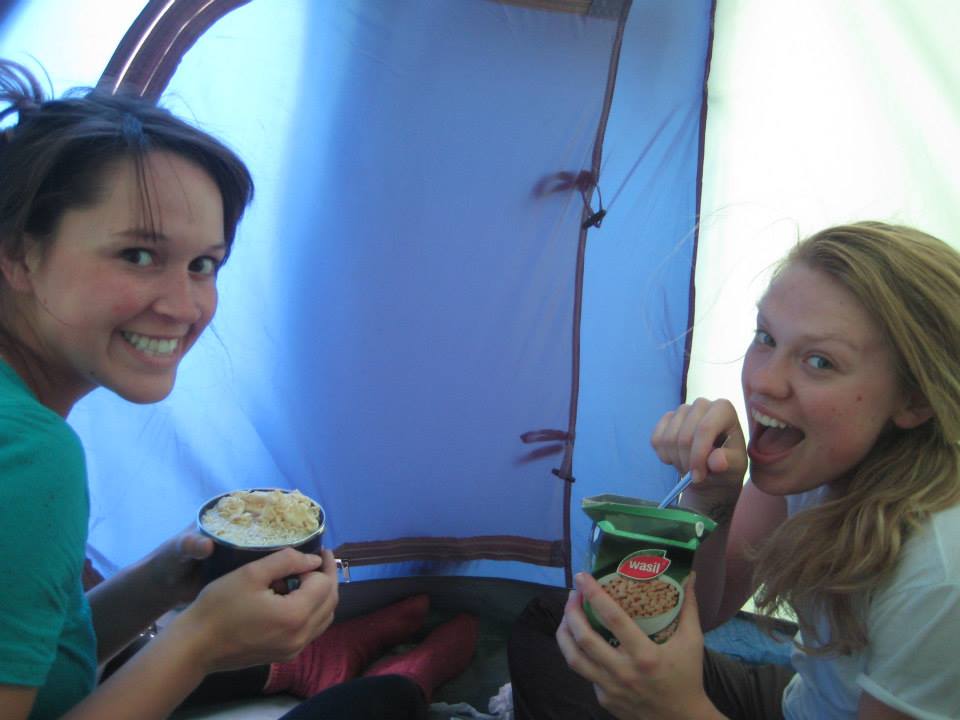
Planning Your Meals:
When planning your food for a hike in Torres del Paine, it’s important to consider both your nutritional needs and the weight and space limitations of your backpack. Here’s a food list that combines lightweight, energy-rich options to keep you fueled and satisfied during your hiking adventure:
Breakfast:
- Instant oatmeal packets
- Granola or cereal bars
- Nut butter (peanut, almond, etc.) for spreading on crackers or bread
- Dried fruits (raisins, apricots, dates)
- Instant coffee or tea packets
Lunch:
- Whole grain wraps or tortillas
- Canned tuna, chicken, or salmon (packed in pouches for easier disposal)
- Cheese (hard cheeses like cheddar or gouda tend to travel well)
- Nut and seed mix (almonds, walnuts, sunflower seeds)
- Dried beef or jerky
- Instant hummus or bean dip (requires no refrigeration)
- Crackers or crispbread
Snacks:
- Trail mix with nuts, seeds, dried fruits, and a bit of chocolate
- Energy bars (look for those with a balanced mix of carbs, protein, and fats)
- Fresh fruits that travel well (apples, oranges, or grapes)
- Energy gels or chews for quick bursts of energy
- Dark chocolate or chocolate-covered nuts
Dinner:
- Instant dehydrated meals (just add hot water) like pasta, rice, or soup
- Instant mashed potatoes
- Freeze-dried vegetables
- Canned soups or stews (consider lightweight packaging)
- Pre-cooked rice or quinoa pouches
Extras:
- Instant hot chocolate or hot cider packets
- Electrolyte tablets or drink mixes for hydration
- Spices and seasonings in small, resealable containers (salt, pepper, herbs)
- Reusable utensils and a compact camping stove (if you plan to cook hot meals)
- Cooking oil (in a small, spill-proof container)
Remember that food safety is crucial, especially in remote areas. Pack food in sealed, airtight containers to prevent odors and leaks. Dispose of waste properly, following Leave No Trace principles. Additionally, make sure you’re aware of any dietary restrictions or allergies you or your hiking companions may have, and plan your food accordingly.
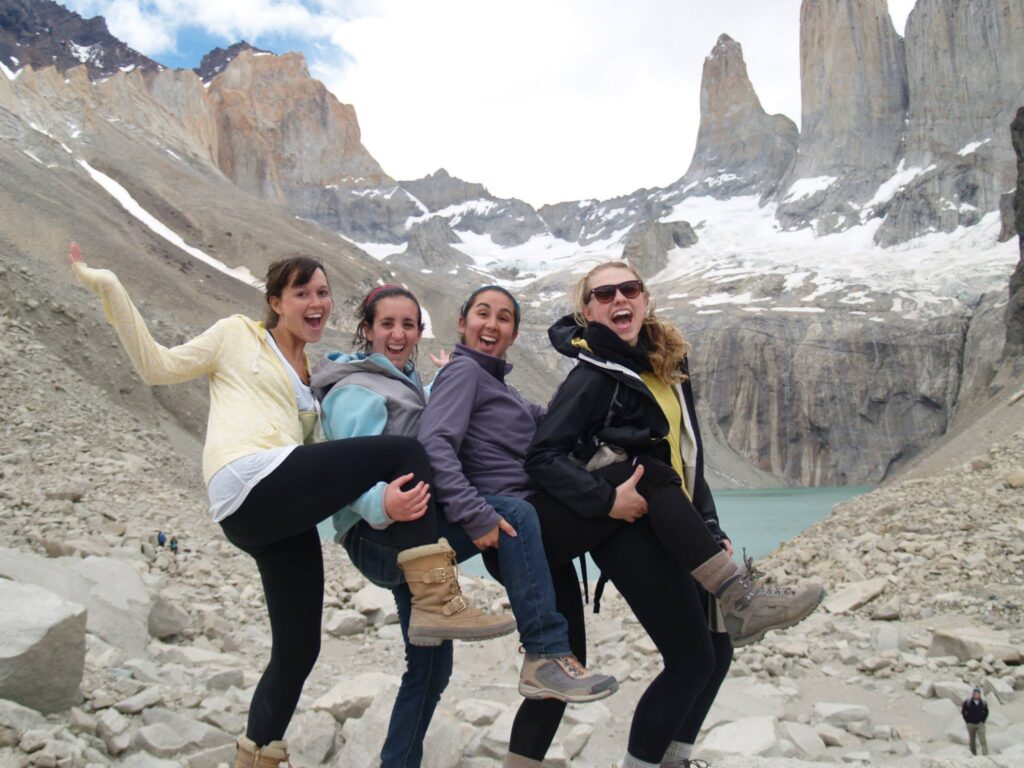
Exploring the Untamed Beauty: A Hiker’s Guide to Torres del Paine: The 11 Day Itinerary
This itinerary was cautiously and lovingly crafted by an old friend of mine, and it brings me great joy to share it because it was truly such a solid guide. After 11 days together, there’s only one suggestion the four of us agreed on that would improve this guide: take the trail backwards. By starting in Argentina and ending at the Los Torres Campsite, you will get to see the most beautiful sites at the end of your trip (instead of the beginning) and you’ll be spending most of the trail hiking down (instead of always climbing up).
For a physical map of our route: http://www.fantasticosur.com/en/torres-del-paine/map/
NOTE: Because we were students at the time, on low budgets, and still fairly inexperienced when it came to hiking, none of us brought tents or mats for the hike. We preferred to spend the extra money to rent versus carrying the extra weight. For that reason, every accommodation listed below will provide rentals for camping.

Arriving and Finding Your First Campsite: The Journey Begins
If you’re arriving from Valparaiso (as we did), or another city that requires some time to reach the closest domestic airport, you may need to allow a day or two for your arrival. On our journey, we left Valpo at 4pm on a Sunday to arrive at the Santiago bus station by 6:30pm. From there, we took a night bus at 9pm that would bring us to Punta Arenas by 12:30am. Our reason for traveling during these timeframes was simple: it was the cheaper option.
From Punta Arenas bus to Puerto Natales (3hrs). Then again from Puerto Natales to Torres del Paine (3.5hrs).
- http://www.busesfernandez.com**** (we took this bus line for our entire journey to Torres del Paine.)
After a scenic bus ride from Puerto Natales, you’ll make your first steps into Torres del Paine National Park. Your first destination is the campsite. Arrive, gather your required rental items and find a suitable spot to set up your temporary home. Fall asleep knowing that your journey has only just begun and remember -this is where the ritual begins.
Accomodation recommendation: Camping Los Torres (tent and mat rental available as well as breakfast and boxed lunch)
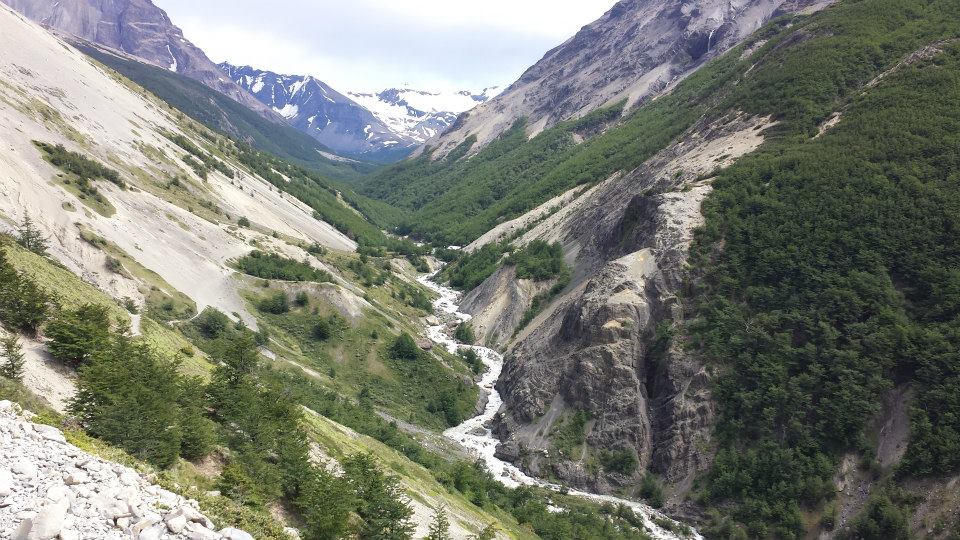
Day 1: Time to Rise and Shine and Conquer the Inclines
Recommended start time: 9.00 AM | Duration: 7-8hrs
Be mesmerized by the azure waters and the towering Cuernos del Paine in the distance. with fantastic views of Lake Nordenskjöld and Almirante Nieto Mn (2,670m).
Once you reach Refugio El Chileno, ditch the weight and take time you need to recover energies. Then, carrying just a small back pack, continue the trail through the millenary Lenga Forest (1hr) until you reach the base of the moraine with its challenging 45min ascent. Here you will be guided to one of the most impressive lookouts in the park: Base of Torres del Paine.
That’s where you will have the view of Torre Sur (2,850 m), Torre Central (2,800m), Torre Norte (2,600m) and Cerro Nido de Cóndor.
Early Morning: Starting Strong
1. Energize Yourself: Begin your day with a hearty breakfast to fuel your body for the demanding ascent ahead. Consume carbohydrates and protein to provide sustained energy.
2. Hydration Is Key: Start hydrated and carry a sufficient amount of water. Stay ahead of dehydration by sipping water regularly during the climb.
The First Hour: Uphill Battle
3. Pace Yourself: As you hit the trail, maintain a steady and deliberate pace. It’s not a race; it’s about finding your rhythm that you can sustain
4. Short Rests: Take short, intentional breaks to catch your breath and allow your muscles to recover. This is a great time to admire the changing vistas and gather your motivation.
Mid-Morning: Navigating the Incline
5. Use Trekking Poles: If you have them, trekking poles can significantly aid in balance and reducing the strain on your legs during steep inclines.
6. Focus on Breathing: Concentrate on your breath to maintain a consistent rhythm. Inhale deeply through your nose, exhale through your mouth, and allow your breath to guide your pace.
The Hour and a Half Mark: Triumph Awaits
7. Visualize Your Goal: As you approach the hour and a half mark, visualize reaching the top. Picture the breathtaking views and the sense of accomplishment waiting for you.
8. Mind Over Matter: Remember that your mental determination is as important as your physical strength. Remind yourself why you embarked on this adventure and let that drive you forward.
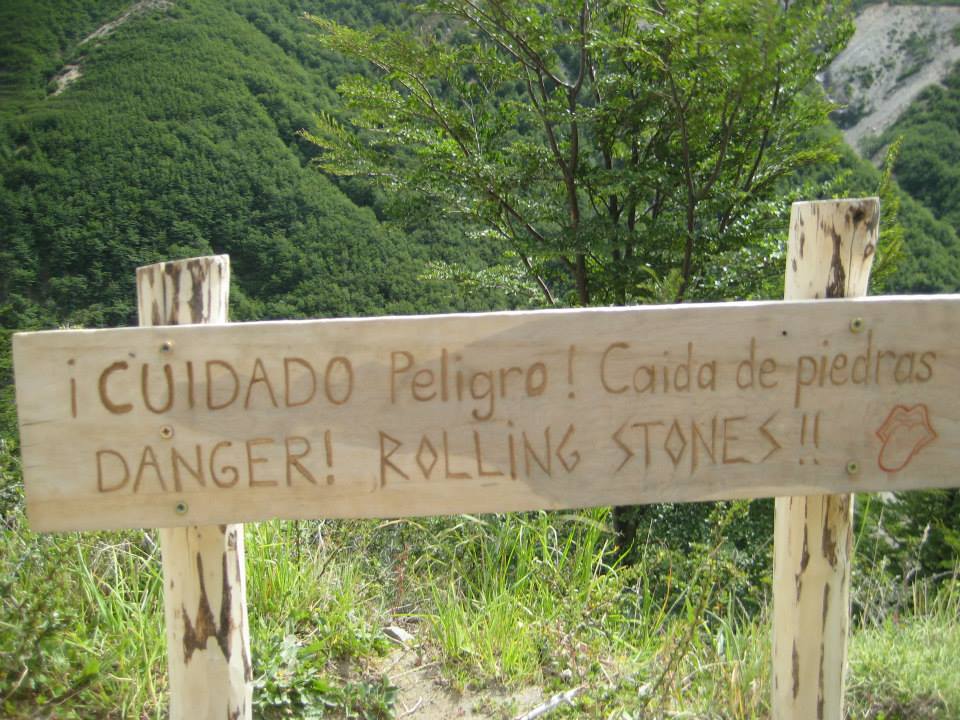
Top of the Incline: Reward and Rest
9. Celebratory Pause: Upon conquering the incline, celebrate your achievement! Take a moment to relish in your accomplishment and soak in the panoramic views.
10 Recovery Time: Reward your efforts with a longer break at the top. Refuel with a snack rich in carbohydrates and proteins to aid in muscle recovery.
Tips for Ascents and Descents:
- Use trekking poles to provide stability and reduce strain on your knees during descents.
- Stay cautious on rocky and uneven terrain, adjusting your pace as needed.
- Keep an eye on weather changes, as it may impact visibility and trail conditions.
- Wear comfortable and supportive footwear that provides good grip.
- Keep your backpack weight manageable to ease the strain on your back and legs.
- Engage your core muscles while climbing to maintain balance.
- Stay positive and focus on the progress you’re making.
Conclusion: The first hour and a half of steep inclines are a true test of your determination and physical strength. As you conquer this challenge, remember that every step forward brings you closer to the stunning rewards that Torres del Paine has to offer. Your journey is just beginning, and each challenge you overcome becomes a part of your incredible adventure tale.
Accommodation recommendation: Refugio El Chileno (mat rentals, breakfast and boxed lunches) or Camping Refugio Chileno (includes tent rental as well)
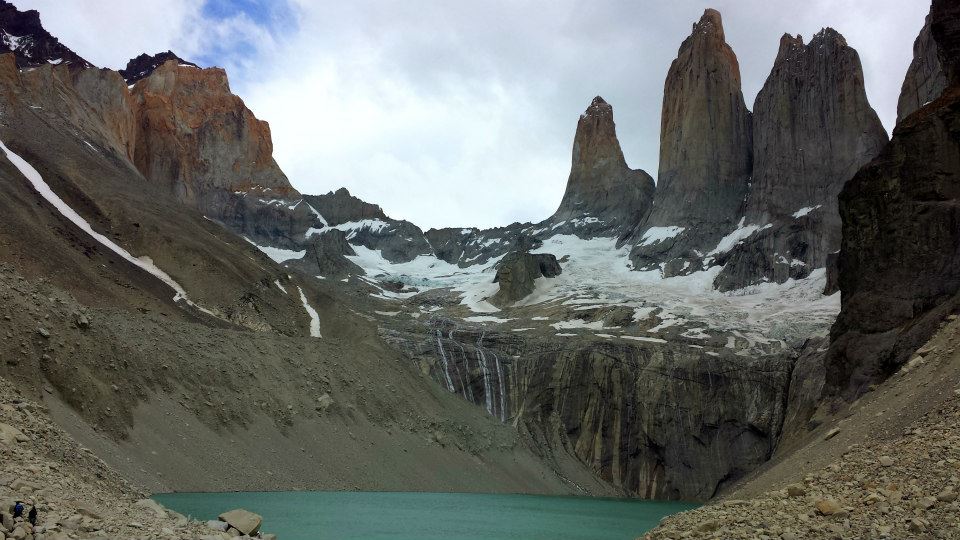
Day 2: Embracing the Wilderness
Recommended hour to start: 9.00 AM | Duration: 4-5hrs
Today’s hike will introduce you to a variety of terrains, from lush forests to open valleys. The journey to Los Cuernos campsite offers a mix of terrains, each revealing a unique facet of the park’s beauty, so be prepared for ever-changing landscapes. Keep an eye out for the park’s diverse wildlife. From guanacos grazing in the fields to condors soaring above, each encounter adds a touch of magic to your journey.
About 30 minutes into today’s hike, you will notice the sign to take the “shortcut” that leads to Refugio Los Cuernos. This trail goes through the Base of Almirante Nieto Mn (with is part of the Paine Massif). Here you’ll have more great views of Nordenskjöld Lake.
After about 4-5hrs, you’ll approach the campsite where you’ll catch sight of the iconic Los Cuernos peaks. Reach the Los Cuernos campsite, your home for the night. Find a cozy spot for your tent and take in the views that surround you. This magical place here is considered one of the most charming sites in the whole park. A perfect place to reenergize for the next day’s challenging trek: The French Valley.
Accommodation recommendation: Refugio Los Cuernos***** (with tent and mat rentals, breakfast and boxed lunch)
NOTE: From December the flora presents different colors. Especially the “Ciruelillo or Fire Bush” which take its name from the red color of its flowers.
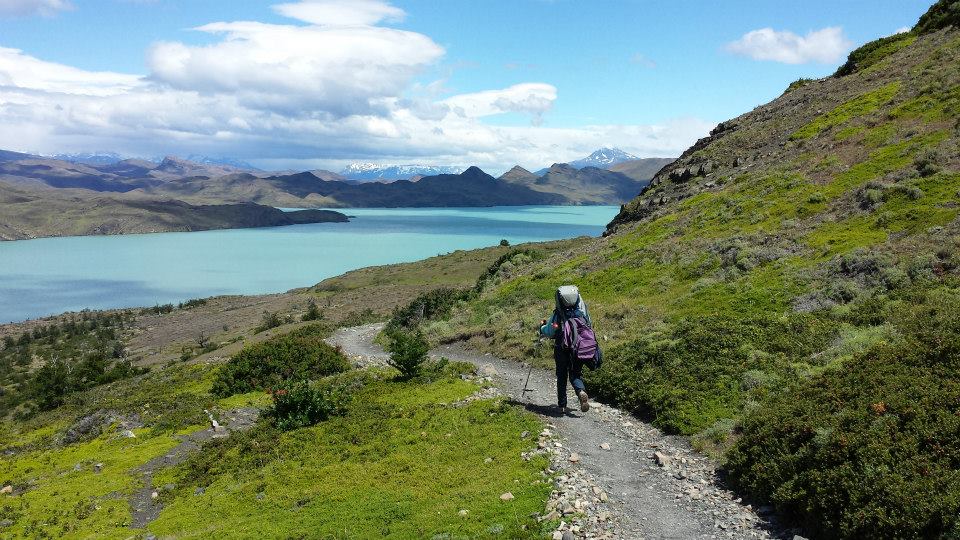
Day 3: Enchanting Pathways
Recommended hour to start: 9.00 AM | Duration: 10-12hrs
Your destination is the Campamento Italiano, a gateway to some of the park’s most breathtaking treasures. Over the first two hours of hiking, you’ll traverse varied terrain, each ascent rewarding you with panoramic views of the stunning Nordenskjöld Lake.
Once you reach until Campamento Italiano, find a CONAF staff. These guys will be your saviors at this point. Leave your things with them and take only a day pack for the next part of the trek. You’ll be grateful you have this opportunity once you start the 1.5hr ascent to the French Glacier Lookout.
At the lookout, you’ll get to hang around the hanging glacier, have a picnic and maybe see a small avalanche or two. When you’re ready to carry on, the trail continues to Campamento Británico. After 20 minutes or so on the trail, you’ll reach the lookout point. This lookout, called Mirador Británico, is supposedly one of the most overwhelming spots in the circuit.
This is because it is here where you can admire all the big beauties: Paine Grande, Cerro Hoja, Cerro Máscara, Cerro Catedral, Cerro Aleta de Tiburón, Cuerno Norte, and more.
After you’ve marveled at the nature’s grandest, go back the same way you came, grab your bags, and then head on down to the Pehoé sector.
Accommodation recommendation: Lodge Paine Grande (indoor lodging) or Camping Los Cuernos (platform).
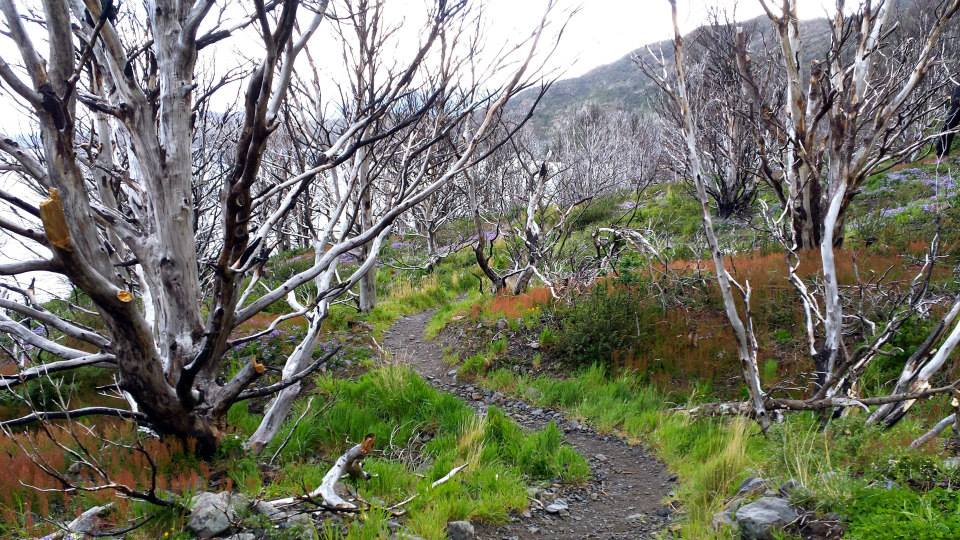
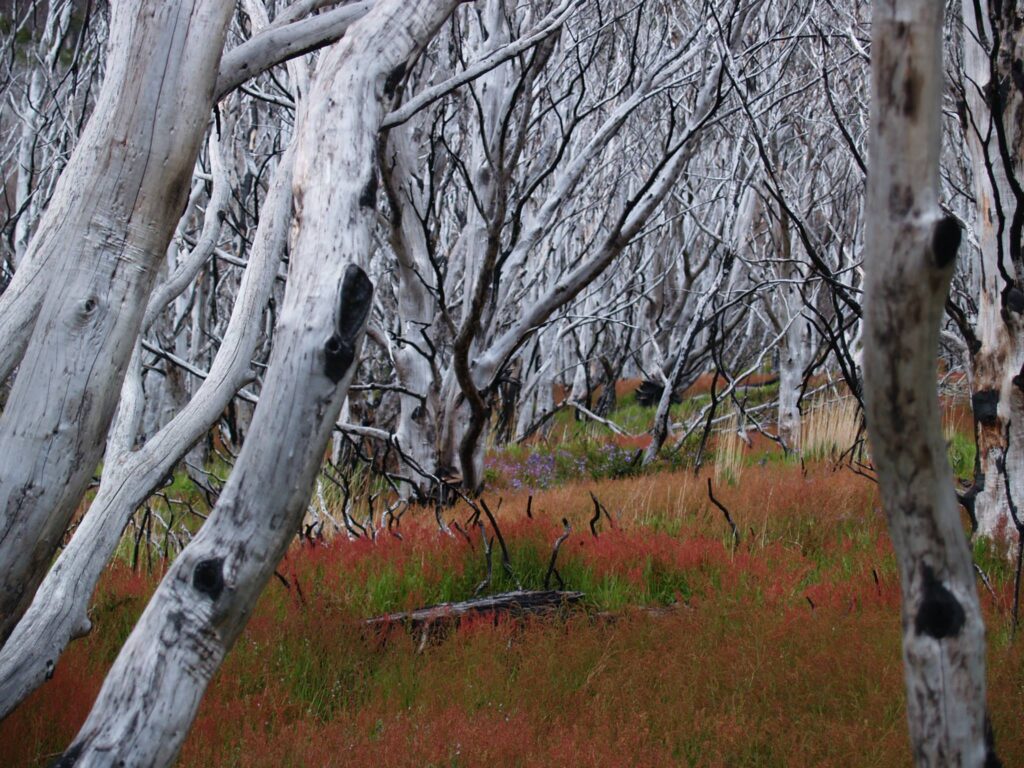
Day 4: Completing the Circle – Return to Puerto Natales & Trek to Grey Glacier Lookout
Recommended hour to start: 9.00 AM | Duration: 8-9hrs
Today holds a bittersweet blend of returning to civilization while embarking on a journey to the awe-inspiring Grey Glacier Lookout. On this concluding day, you’ll venture through the western side of the Paine Massif, capturing panoramic vistas of Grey Lake and the surrounding mountains as you make your way to the Grey Glacier Lookout. Equip yourself with a packed lunch, snacks, water, and all the essentials for a day on the trail. The journey ahead is as rewarding as it is breathtaking.
After 1.5hrs stepping onto this path, you will arrive to the first lookout point. Here you’ll see the Grey Glacier in all it’s glory (from a distance, of course). This is the halfway point. Take time here to rest and gather your strengths, you’ll need it for the next 1.5-2hrs. The Grey Glacier awaits!
When you arrive, the culmination of your journey, you’ll be seeing all the icy splendor of the Main Lookout. This is where you get to see the towering glacier face to face.
TIP: Pack a lunch and sufficient water for the Grey Glacier Lookout trek.
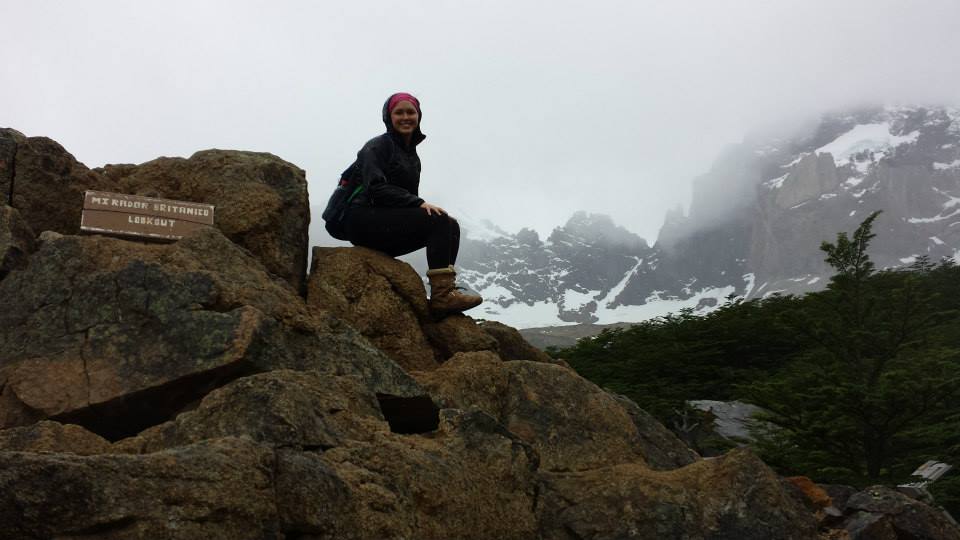
Homeward Bound:
As your Torres del Paine adventure nears its conclusion, your final day holds an intriguing blend of retracing your steps and embarking on a unique water journey across Pehoé Lake.
Accommodation Recommnedation: Hostel Niko’s II Adventure http://www.hostelworld.com/hosteldetails.php/Niko-s-II-Adventure/Puerto-Natales/18755?dateFrom=2014-12-05&dateTo=2014-12-06#availability
NOTE: This is particular hike takes longer to do on your own. I’d recommend finding a tour bus that will pick you up and drop you back off at your accommodation.
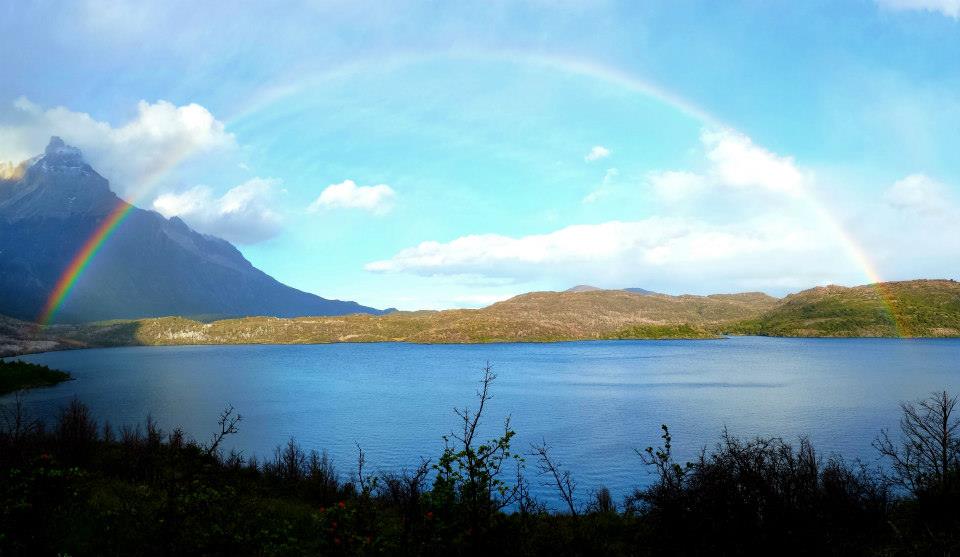
Day 5: Restoration and Reflection – A Well-Deserved Day of Rest
A much-needed break after your exhilarating Torres del Paine adventure. Day Five offers you the chance to fully immerse yourself in relaxation, reflection, and the simple pleasures of Puerto Natales. This is a good day to return any rented gear from Puerto Natales and recuperate for the days to come.
TIP: Prioritize self-care, whether it’s through relaxation, meditation, or pampering.
Accommodation recommendation: Hostel El Ovejero (http://www.hostelworld.com/hosteldetails.php/Hostel-El-Ovejero/El-Calafate/80879?dateFrom=2014-12-06&dateTo=2014-12-08#availability)

Day 6: Hiking Around Parque Nacional Los Glaciares
Welcome to a new chapter of exploration! On Day Six, you’ll venture beyond the Torres del Paine region and immerse yourself in the beauty of Parque Nacional Los Glaciares.
From Puerto Natales, you can take a bus to El Calafate, Argentina (4-5hrs). (Book online or through your accommodation.) http://www.turismozaahj.co.cl/turismozaahjenglish/new-page-5/new-page.html
Adventures in Parque Nacional Los Glaciares:
- Full day tour around the Perito Moreno Glacier (http://www.viator.com/tours/El-Calafate/Full-Day-Tour-to-the-Perito-Moreno-Glacier/d935-3851D_PMG)
- Hielo y Adventura “Big Ice” Trek (http://www.hieloyaventura.com)
- Balcony Tour (3hrs)
- Cerro Frias Balcony Tour
TIP: Choose trails that match your fitness level and hiking experience.
For more tips on where to go and what to do in El Calafate:
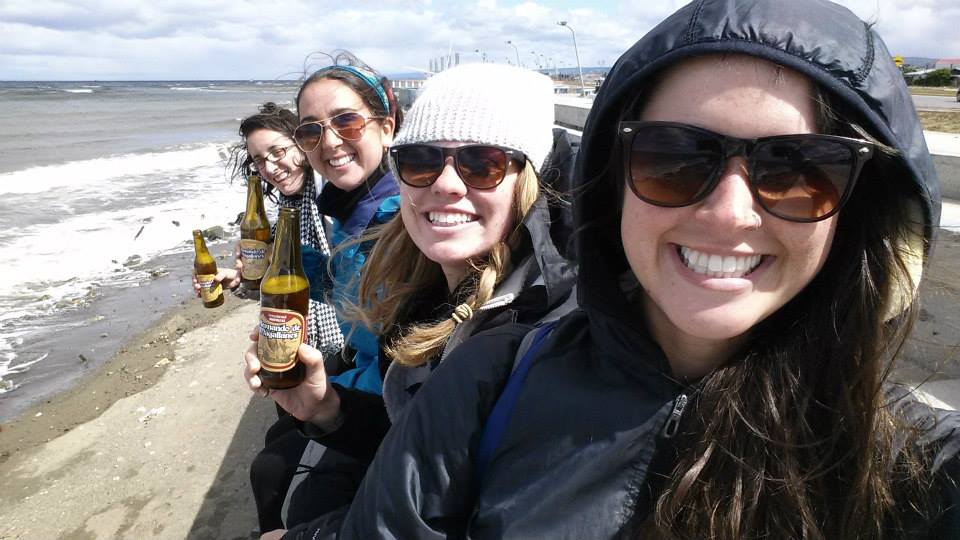
Day 7: Returning to a Day of Leisure in Punta Arenas
Day Seven marks the return to Punta Arenas, the city where your adventure began. From here leave El Calafate and make your way back to Puerto Natales. There grab a bus and head back to Punta Arenas. Take this day to relax and delve into the charming nuances of the city. Meander through the town, head towards the waterfront and find a peaceful spot to sit and enjoy a cold local brew, and find a spot to sit and watch as the sun sets.
TIPS: Embrace the freedom of not having a set agenda and engage in activities that bring you joy, whether it’s reading, sketching, or people-watching.
Accommodation recommendation: Hostel Patagonia House (Avenida Independenica 416)
Day 8: Find The Love On Isla Magdalena
Exploring Isla Magdalena from Punta Arenas is an expedition into a world of penguins and pristine beauty. From the 2.5h ferry ride across the Strait of Magellan to the heartwarming encounters with Magellanic penguins, this day will become a cherished chapter of your Patagonian adventure.
Follow designated paths that allow you to observe the penguins while minimizing disturbance to their habitat. As you stroll along the trails, the penguins’ antics will captivate your attention. Make sure to leave time to visit the historic lighthouse. There you can climb to the top for panoramic views of the surrounding seascape and the island’s rugged beauty.
Tours only run on specific days in winter, so be sure to check the schedule ahead of time.
http://www.comapa.com/es/excursiones-destacadas/navegacion-a-isla-magdalena/
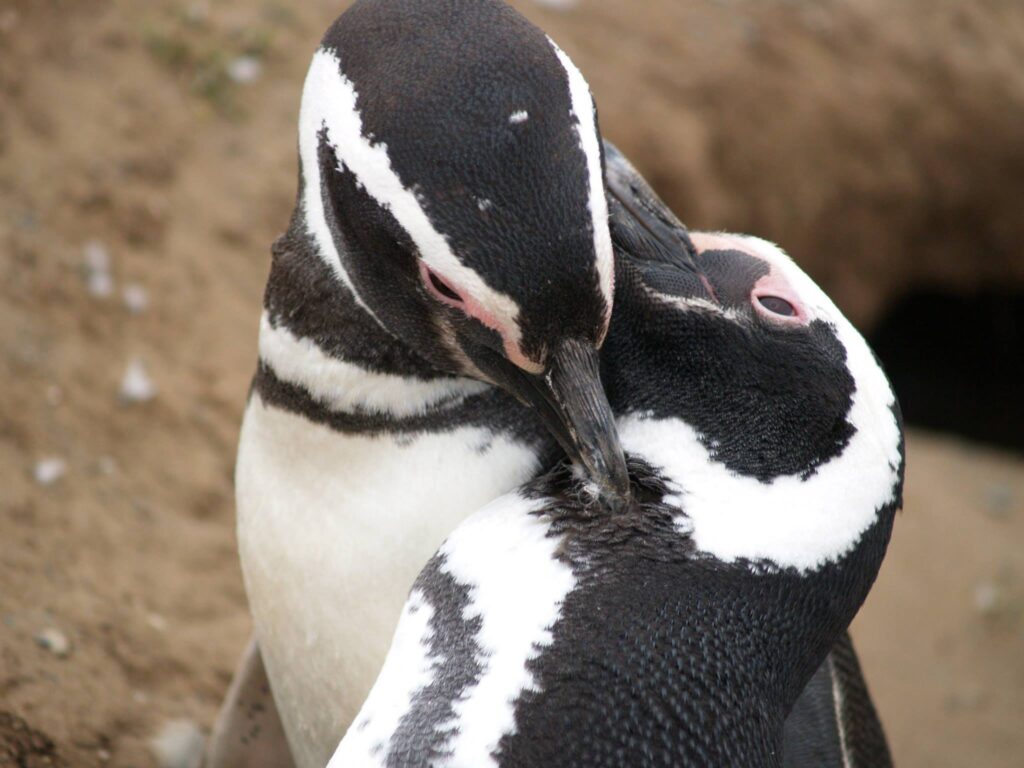
Day 9: Farewell and Gratitude
As your adventure-filled journey draws to a close, Day Nine is a day of farewells and gratitude. Begin your day with a moment of quiet reflection. Watch the sunrise over the city. Complete your final packing, ensuring you have all your belongings in order. Take a moment to double-check your essentials and travel documents. If there are souvenirs or local crafts you’d like to take home, visit local shops and markets to gather a few special reminders of your adventure.
Final Tips for the Hiker’s Guide to Torres del Paine, Patagoina
- Start your days early to make the most of your time in the parks.
- Stay hydrated and keep energy-boosting snacks handy.
- Pack a headlamp or flashlight for navigating at night.
- Embrace the communal atmosphere at the campsite – you’re sharing stories with fellow explorers from around the world.
- Be prepared for changing weather conditions by layering your clothing.
- Wear comfortable and supportive footwear that provides good grip.
- Apply sunscreen and wear a hat to protect yourself from the sun’s rays.
- Take time to stretch during breaks to prevent muscle stiffness.
- Respect the park’s Leave No Trace principles by packing out all trash and waste.
- Keep your backpack weight manageable to ease the strain on your back and legs.
- Engage your core muscles while climbing to maintain balance.
- Stay positive and focus on the progress you’re making.
- Check weather forecasts and trail conditions before setting out.
- Carry a map, compass, and any necessary permits for your chosen hikes.
